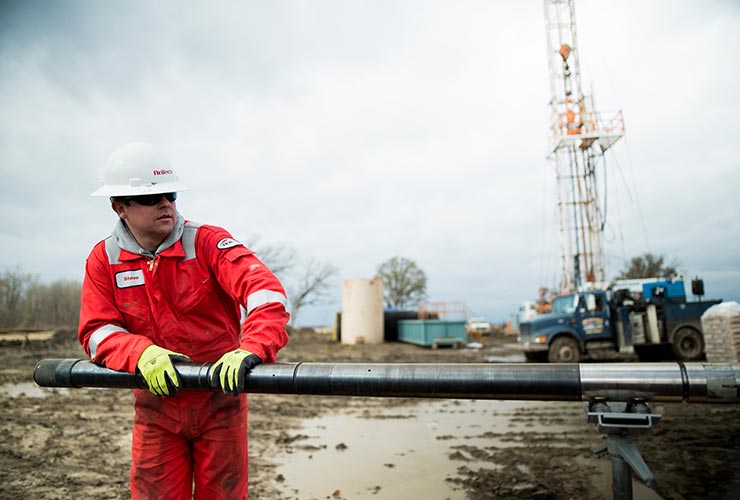What Is An Orienter?
A directional coiled tubing drilling string comprises a number of highly specialised components working in unison. One of the more interesting components is the orienter. It’s a component whose features we sometimes struggle to explain to clients, so in this article I am going to discuss the purpose of the orienter, its function and give a brief tour of one world class embodiment.
To understand why we need an orienter when drilling with CT, let’s consider the case of drilling directionally on drill pipe. To change the direction of a borehole, a directional mud motor (that’s a mud motor with a bend) is conveyed to the bottom of the hole on jointed pipe.
An MWD sub immediately above the motor tells us which way the motor is pointing. Clockwise torque is applied at surface until the MWD confirms that the motor is pointing in the direction we want the hole to progress. WOB is then applied and the motor drills away. MWD Surveys are ‘pumped up’ as the hole progresses and any deviation in Toolface can be corrected by modifying the holding torque at surface. Once sufficient angle has been achieved, the same survey package can be used to confirm the azimuth of the new hole. If the measured azimuth is not in accordance with the plan, the drill pipe may be rotated to orient the Toolface to make corrections in the horizontal plane.
Now let’s consider the CT case. The directional mud motor, and the survey package above it are conveyed into the hole on CT. CT is continuous pipe, stored on a semi trailer sized reel at surface. CT cannot be rotated in the hole. To do so, the reel, injector and upstream hydraulics would need to rotate around the wellhead in perfect synchronisation. So changing Toolface by rotating at surface is not an option. This is where the orienter comes in. The orienter sits somewhere between the end of the CT and the top of the mud motor. The orienter exerts a torque to enable the drilling motor to rotate relative to the end of the CT, about their mutual axis.
It makes sense for the survey package to be located below the orienter, so that the results of an orienting action can be measured directly. Alternatively, a positional transducer on the orienter itself can be used to track the relative positions of the upper and lower BHA and apply appropriate corrections to the survey.
If we look at the specs for a typical slim-hole drilling motor, we can see operating torques in the range 400-600 lbf-ft. To do its job, the orienter needs to rotate against this torque so that the direction of the hole can be changed while drilling is in progress.
This rating alone tells us that the orienter is no trivial piece of kit. Several implementations have been demonstrated in the field. Direct hydraulic actuation uses hydraulic control line inside the coil to actuate the orienter which operates on a helix/piston principle. Electric over hydraulic actuation uses a downhole hydraulic pump to develop pressure to act on a similar helix/piston arrangement. A limitation of both of the above is that eventually the piston/helix assembly runs out of mechanical travel, limiting the angular travel of the orienter.
Another embodiment uses drilling fluid acting on a hydraulic indexing mechanism. Cycling the pumps causes the orienter to index through a pre-determined angle. This embodiment had the advantage of unlimited angular travel. That is to say, a large angular displacement can be achieved by repeated actuations. However, since each actuation requires cycling the pumps for long enough to cause a substantial pressure change at the BHA, it is not particularly suited to applications where a gas phase is circulated, or where tight control of bottom hole circulating pressure is critical.
The present state of the art is the direct drive electrically actuated orienter.
A permanent magnet brushless DC motor is powered through e-line in the CT. An innovative drive train trades the DC motor’s high speed for torque, producing up to 1000 lbf-ft under stall conditions, to overcome the most aggressive mud motors. The ingenious design manages to leave sufficient space for drilling fluid to flow through the orienter, so operation of the mud motor is unimpaired.
The drive train has no mechanical constraints – it can rotate forever, meaning that it is actually possible to drill a straight hole with a bent motor. Because the electric orienter has no effect on flow rates or pressures, circulation can continue unaffected when a steering change is being made, meaning that spurious, differential pressure related torque reactions are eliminated from the steering process.
Author: Richard Stevens
Published: 28th March 2018


Comment
Your Email
Enter your comment here:
Enter Your Comment
Your Email
Comments












+44 1392 933 100 | +1 800-868-1562